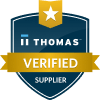Applied Material Solutions is an industry-leading provider of various chemical products, including silicone antifoams, non-silicone antifoams, colloidal silica, corn oil demulsifiers, and much more. To ensure you have a thorough understanding of our products and how they work, it’s important to know the various chemical terminologies used when describing them. Below is a detailed glossary of terms you’ll likely encounter when working with our products.
Chemical Terminology
- Silicone Antifoams: Silicone antifoams are normally composed of hydrophobized silica that is finely dispersed within a silicone fluid. The resulting compound is then stabilized into a water-based or oil-based emulsion. These antifoams are highly effective due to their general chemical inertness, potency even in low concentrations, and ability to spread over a foam film. If needed, they can be combined with other hydrophobic solids and liquids to improve their defoaming properties.
- Non-Silicone Defoamers: A defoamer that contains no silicone or, in some cases, just a trace amount of silicone. Non-silicone defoamers can be water-based, oil-based, or surfactant-based, and many contain added surfactants to enhance their dispersal capabilities and effectiveness in foaming water. These defoamers are used for a wide range of industries, and not just because silicone may be problematic in some applications. In many applications, these types of defoamers often outperform silicone-containing antifoams.
- Silicone-Free Defoamers: Much in the same way as the terms “antifoam” and “defoamer” are often used interchangeably, the same can be said about the terms “silicone-free” and “non-silicone.” However, there is a technical difference between the terms. Whereas a non-silicone defoamer may or may not contain a trace amount of silicone, a silicone-free defoamer should be completely devoid of any silicone.
- Defoamers: Typically made of a liquid component and a hydrophobic solid, although some are strictly liquid. Additionally, they are formulated for a balance between solubility and insolubility with the medium that ensures effective foam control performance. By strict definition, defoamers are designed to destroy existing foam but most also possess antifoam capabilities.
- Silicone emulsions: While water-based silicone antifoams are technically considered to be “silicone emulsions,” the term normally refers to emulsions that are not specifically designed for foam control. These types of emulsions can be highly varied and constructed from many different types of silicone fluids and surfactants across a wide range of viscosities, particle size distributions, and concentrations. Products of this type find utility in applications ranging from automotive care products to hair conditioners, and from release agents to lubricants.
- Powdered antifoams. Powdered antifoaming agents are suitable for integration into powdered products that may generate foam upon reconstitution with or introduction into water. Antifoams of this type may or may not contain silicone, and they are based upon solid carriers of varying composition, including different types of minerals and starches.
- Water-based defoamers: Utilize water as the carrier, or continuous phase. They typically contain between 60% to 95% water. Many of them are technically oil-in-water emulsions and therefore contain some form of fat or oil (e.g., mineral oils, vegetable oils, and natural or synthetic waxes).
- Colloidal silica: Consists of nano-scale silicon particles suspended in liquid, typically water, thereby forming a liquid sol. The process of creating colloidal silica is closely monitored to ensure that the discrete silica particles remain stable and separate within the liquid medium without aggregating into larger particles or coalescing into unstable gels. Colloidal silica dispersions exhibit a greater density than water and must be ionically stabilized to prevent sedimentation.
- Colloids: A stable suspension of microscopic particles or molecules distributed throughout a second substance known as a dispersion medium. They differ from other types of suspensions in that the colloid is evenly dispersed throughout the suspension and does not separate or settle. Colloids may be any combination of liquid, solid, and gaseous colloids and dispersion media.
- Liquid Foam: Result from gas particles suspended in a liquid dispersion medium. Examples of these include fire-fighting foam, shaving cream, and hair-styling mousse.
- Emulsion: A stable dispersion of two immiscible liquids. Occurs when liquid particles are suspended in a liquid dispersion medium. Common examples include butter, hand lotion, and mayonnaise.
- Sol: Refers to solid particles suspended in a liquid dispersion medium. Pigmented ink, paint, and blood are common examples of sols.
- Solid Foam: Created when gas particles become suspended in a solid dispersion medium. Examples include Styrofoam, pumice, and plaster.
- Corn Oil Demulsifiers: Serve to improve oil release during the mechanical extraction process, resulting in significantly increased corn oil yields. As an added benefit, corn oil demulsifiers may help improve oil clarity.
Partner With Applied Material Solutions
At Applied Material Solutions, we have extensive experience producing a wide range of chemical products, including foam control compounds, hydrophobic silicas, colloidal silicas, and more. Regardless of your industry or application, our team of experts is here to deliver the right chemical solution based on your specific requirements. To learn more about our products, or for help selecting the best solution for your needs, contact Applied Material Solutions today.


